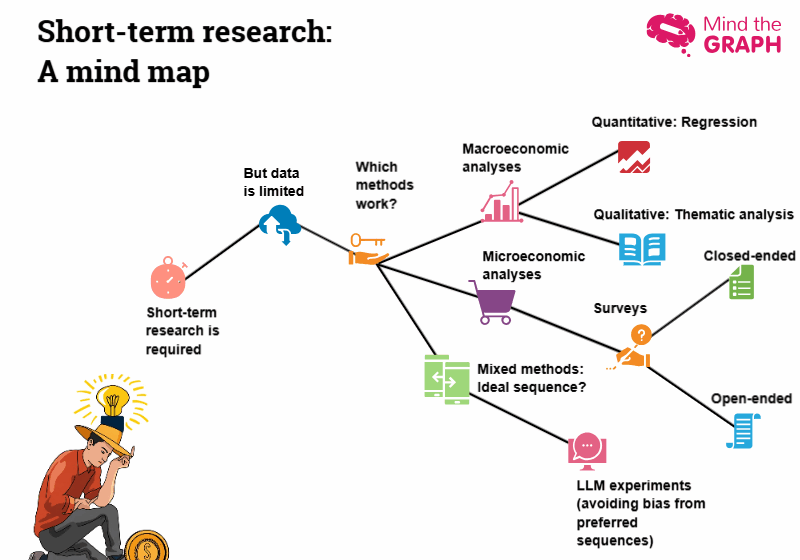Short on time, big on insight: mixed methods and order for short-term research

This post shares key insights from my study, Reframing Short-Term Economic Research: A Mixed Methods Case Study on Inflation and Income Inequality in the U.S., which began by examining how inflation affects different income groups. Although well-studied, recent shifts—like new tariff regimes—called for a real-time lens. I focused on the past 12 months to support timely decisions, knowing long-term datasets aren’t always feasible. However, the limited data made the quantitative model statistically sound but only partially revealing: it showed income growth but couldn’t explain ongoing financial stress. This led me to explore mixed methods instead. Using inflation as a case study, I found that small-scale surveys and thematic reviews reveal overlooked insights—like rising incomes driven by credit use rather than financial comfort, particularly among middle-income households often lumped with lower-income groups in broader studies.
What was the study question? To test a novel idea, I explored how the sequence in which research methods are applied can shape the insights we generate—an often overlooked but critical factor. Researchers typically lean one way: some begin with qualitative data to shape hypotheses, others with quantitative data to spot trends. I wanted to challenge this bias and ask: does the order itself affect what we see?
What were the methods? To examine this neutrally, I used a large language model (LLM)—not for its intelligence, but for its consistency and lack of personal bias. Think of the LLM as a structured reader: it processes information in the order given, without injecting its own opinions. I created two unlabeled data sets—one quantitative (Set 1) and one qualitative (Set 2). In five experiments, the LLM read Set 1 first, then Set 2; in the other five, the order was reversed. Each time, I asked the model to interpret the findings holistically after analyzing them in the given order. I then manually compared the outputs.
What did I learn from the study? The findings were clear: starting with quantitative data followed by qualitative insights produced more grounded and actionable interpretations. This structure seemed to help the model contextualize lived experiences by first anchoring them in measurable trends. I reflect on this approach—and share illustrative examples—in my article, From Regression to Reflection: A Mixed-Methods Journey, published on SAGE’s Social Science Space. For researchers aiming to conduct short-term research for feasibility and as a rapid response to policy shifts or crises, my findings indicate that a blend of quantitative, qualitative, and survey methods provides sufficient depth to inform meaningful conclusions.
My key takeaway is this: sequencing isn’t just a logistical decision—it actively shapes the meaning we extract. Starting with quantitative data often helps prime the analysis with structure, allowing subsequent qualitative or open-ended inputs to be interpreted within a clearer frame. This can lead to more cohesive, layered insights. That said, no sequence is universally superior; it depends on your research goals. If your aim is to surface grounded, emergent themes, you might choose to lead with qualitative inputs instead. The key is intentionality: know why you’re sequencing the way you are, test alternatives when in doubt, and be open to surprising results—because sometimes, the insight lies not just in the data, but in how we choose to listen to it.







